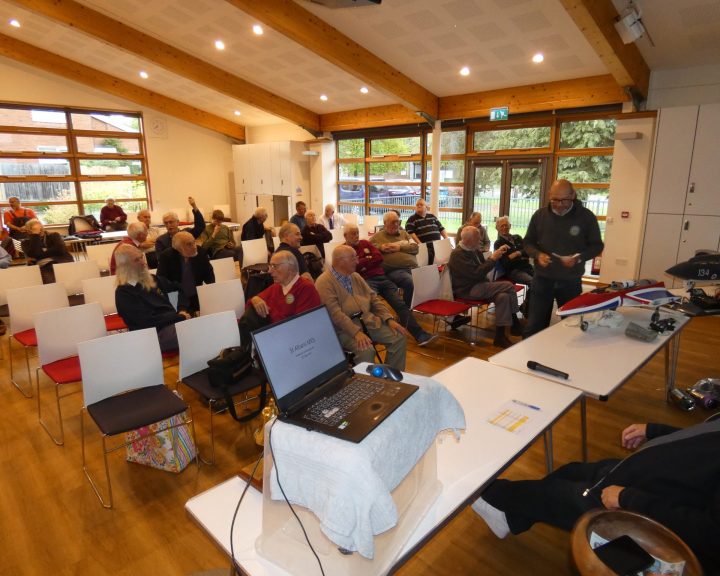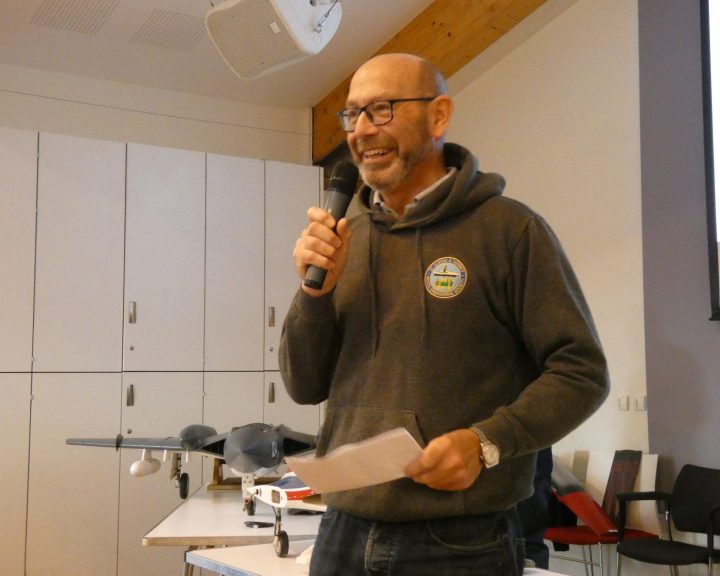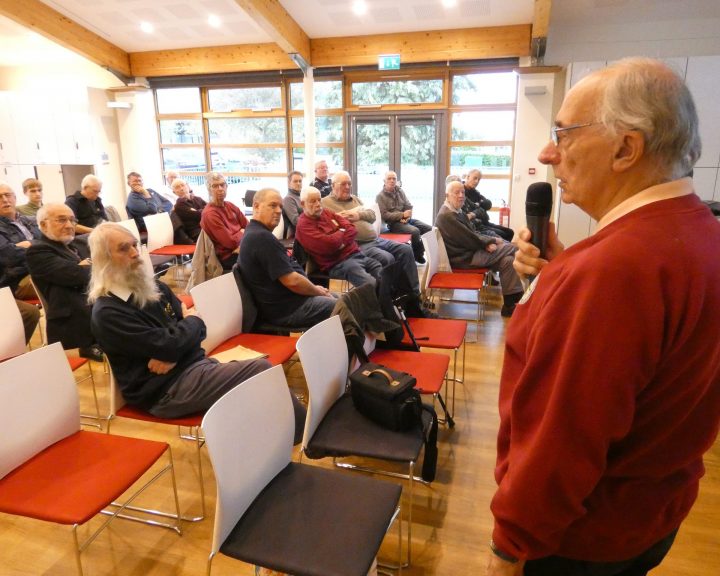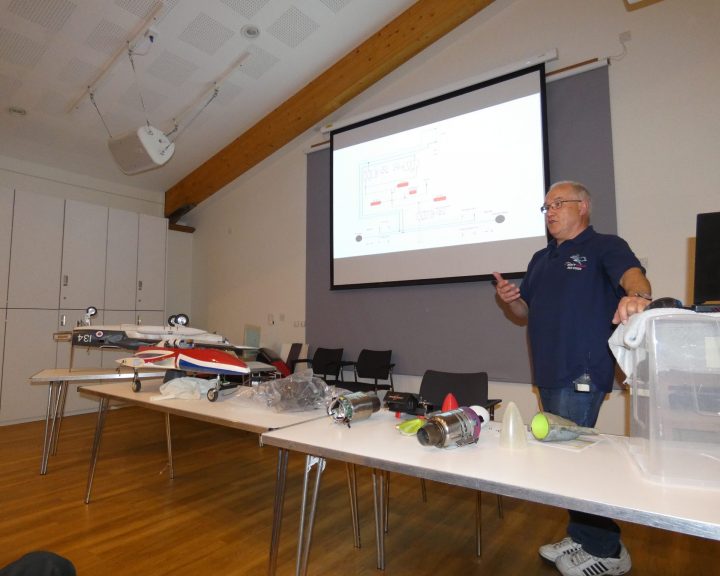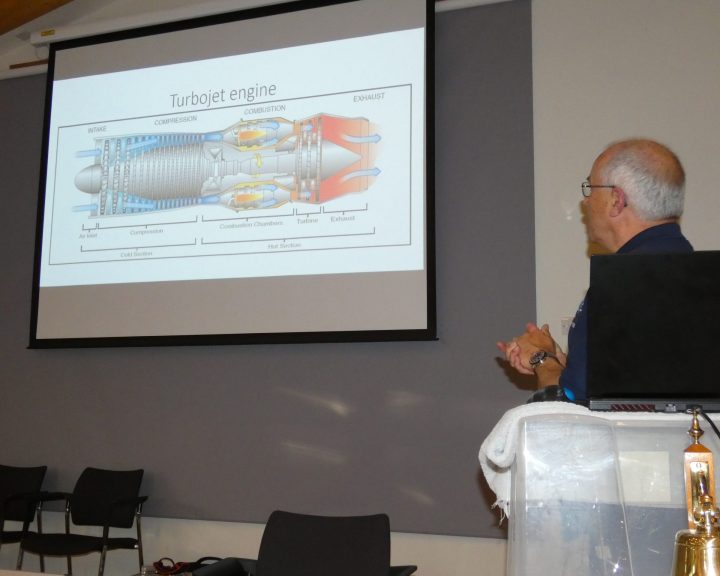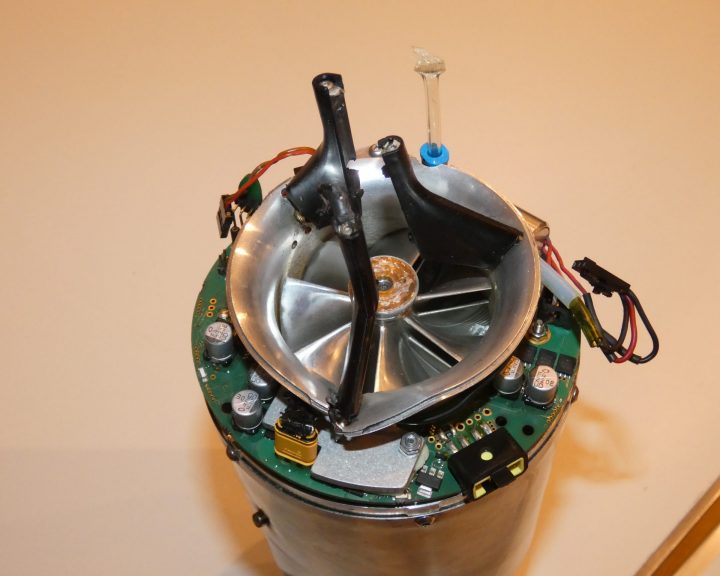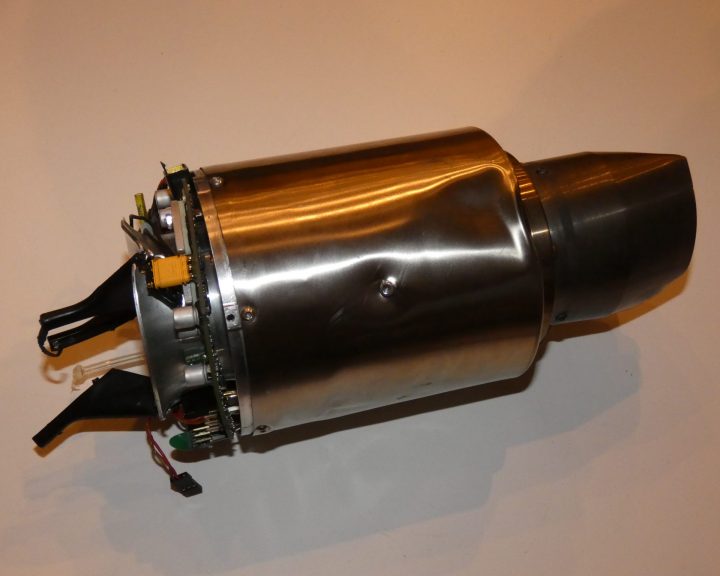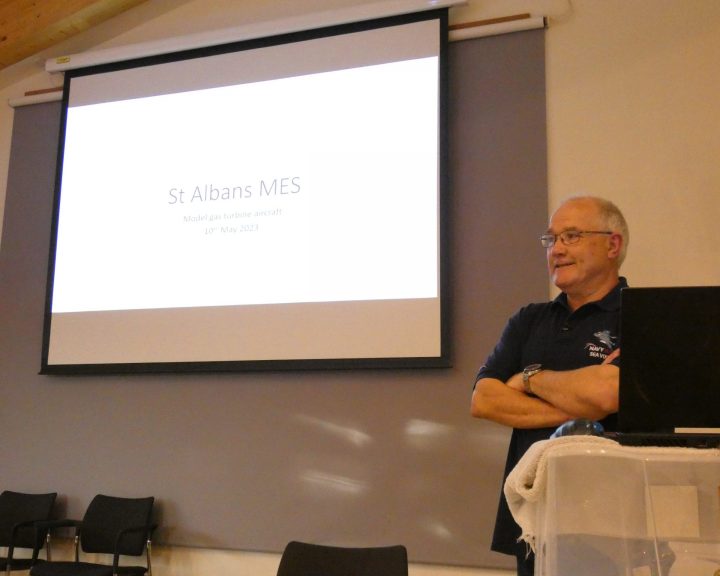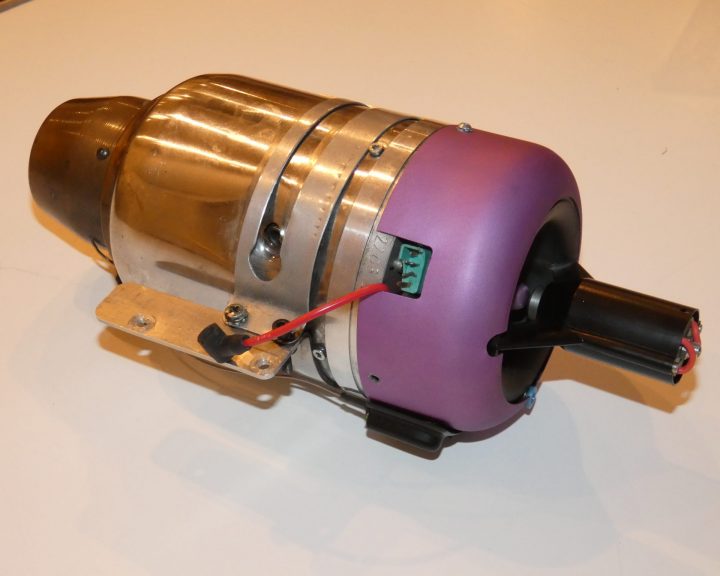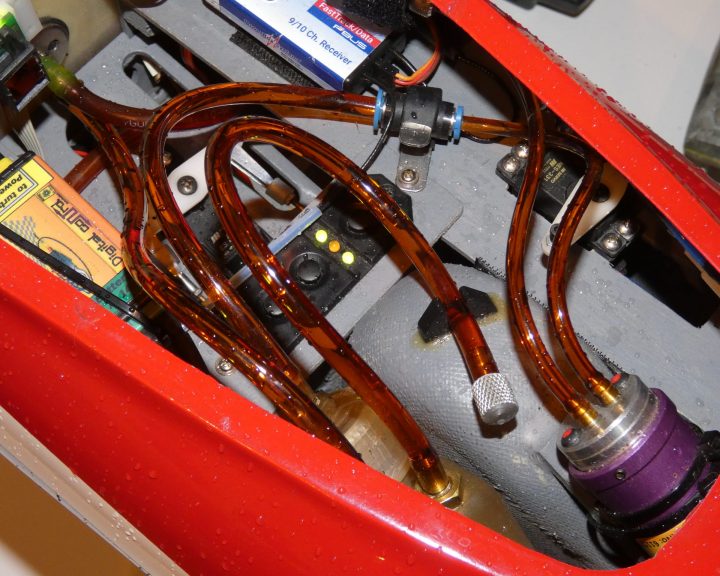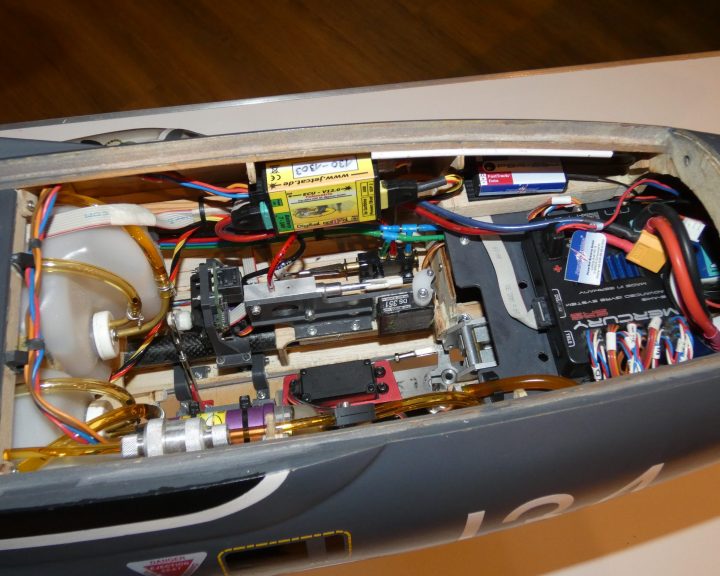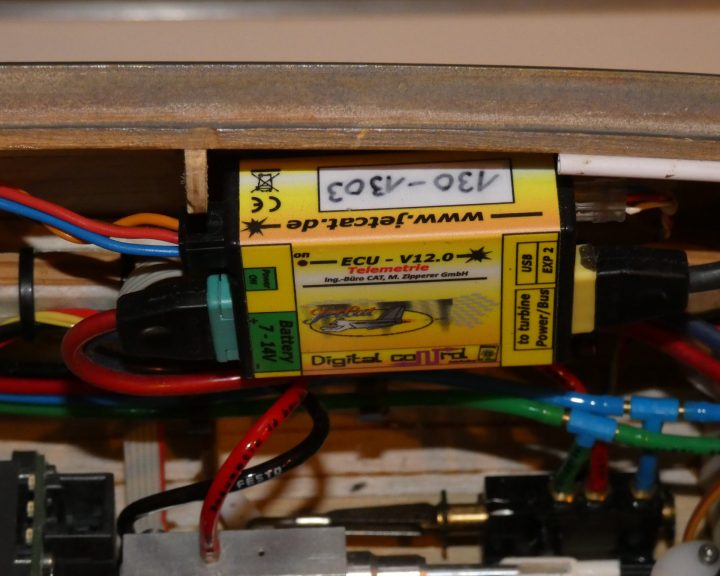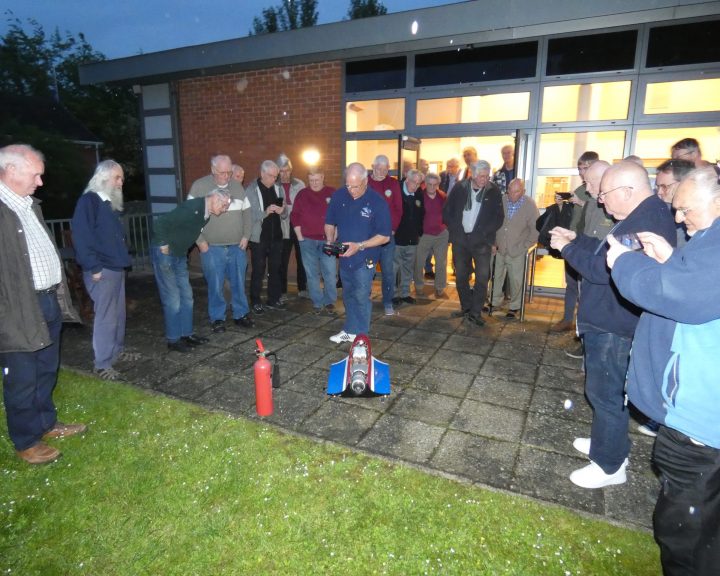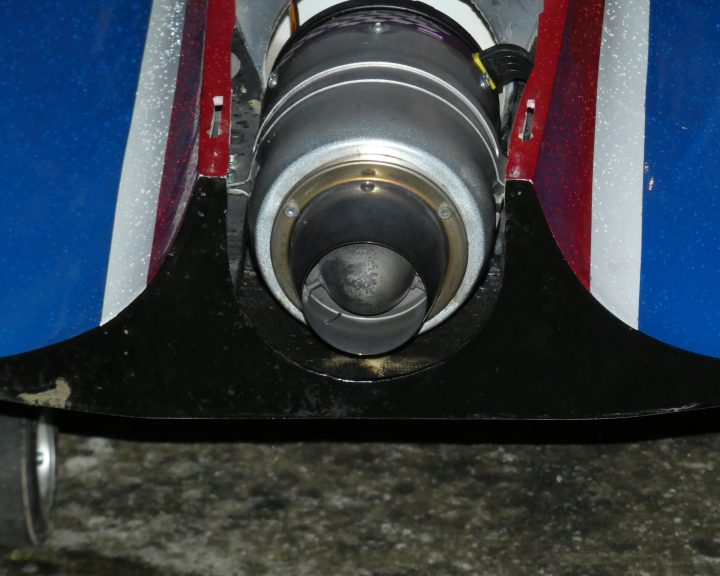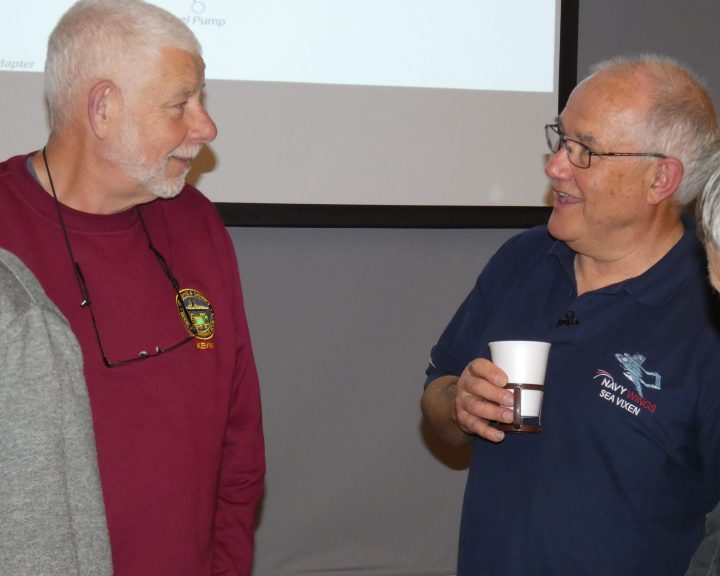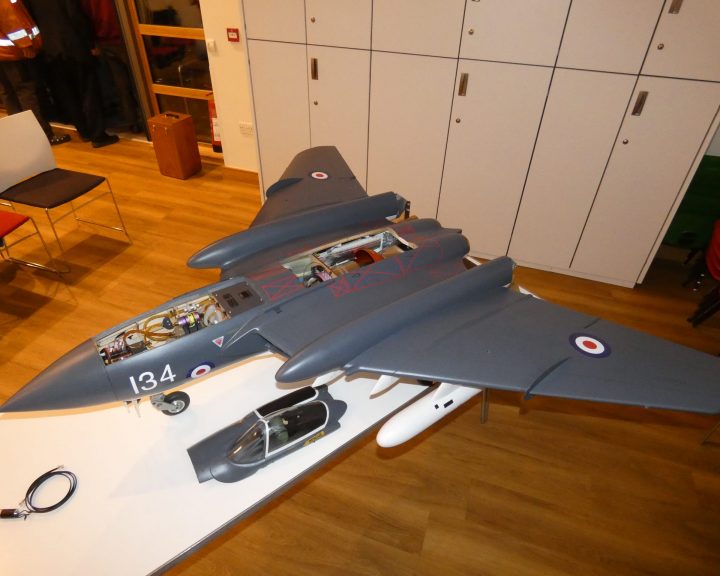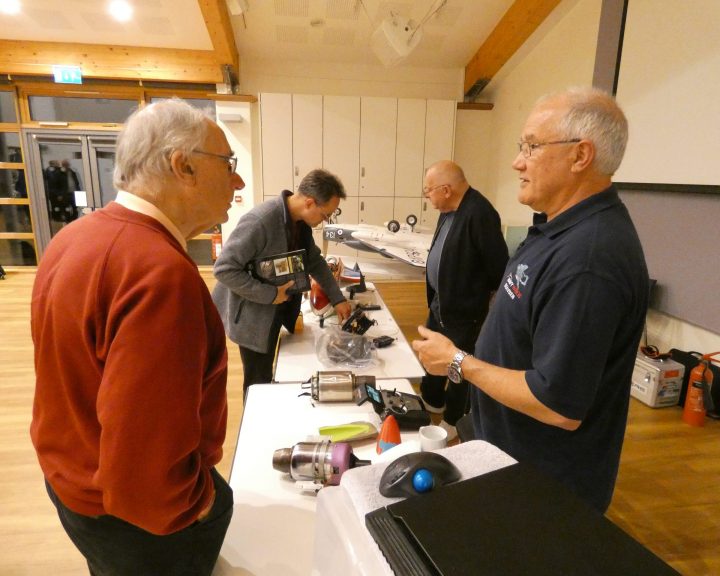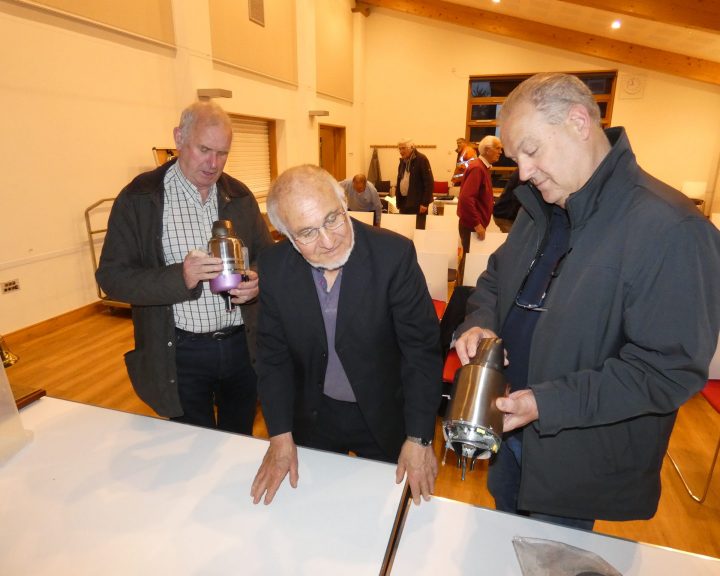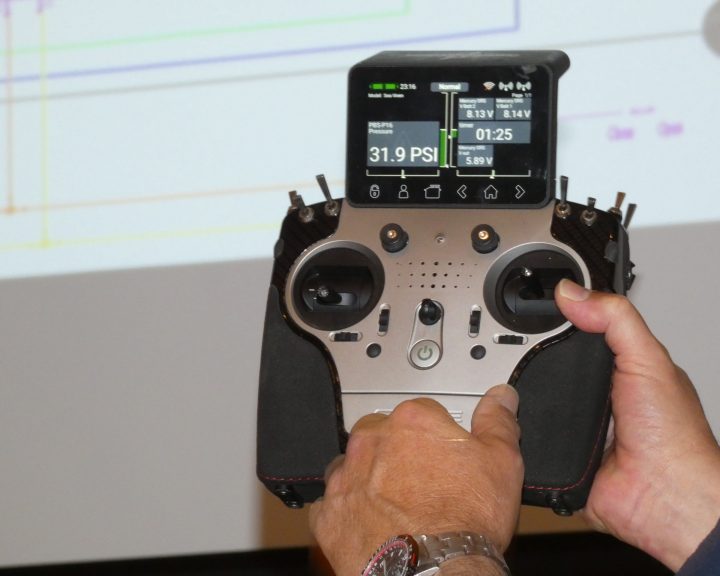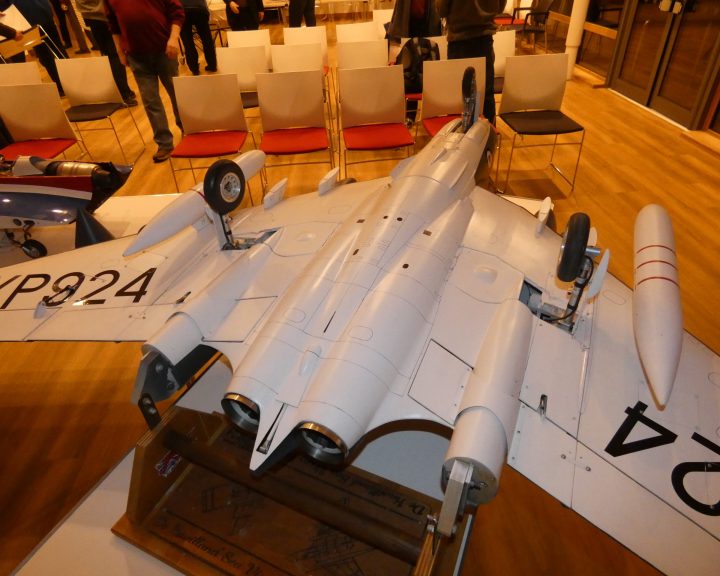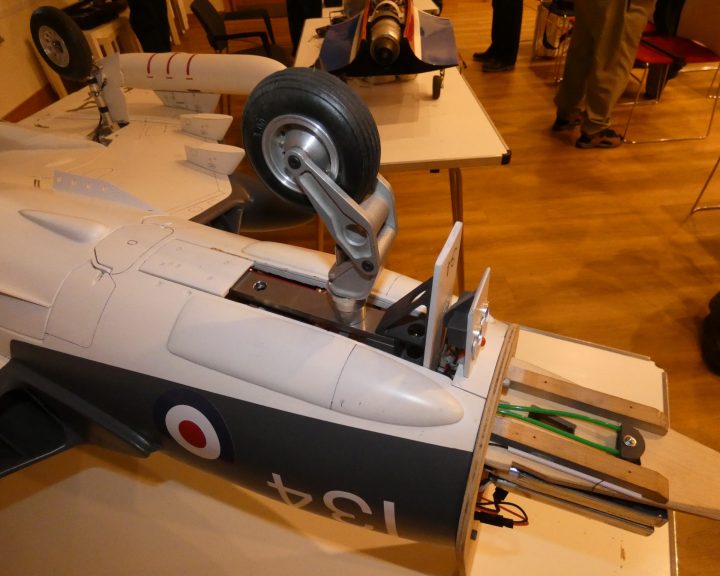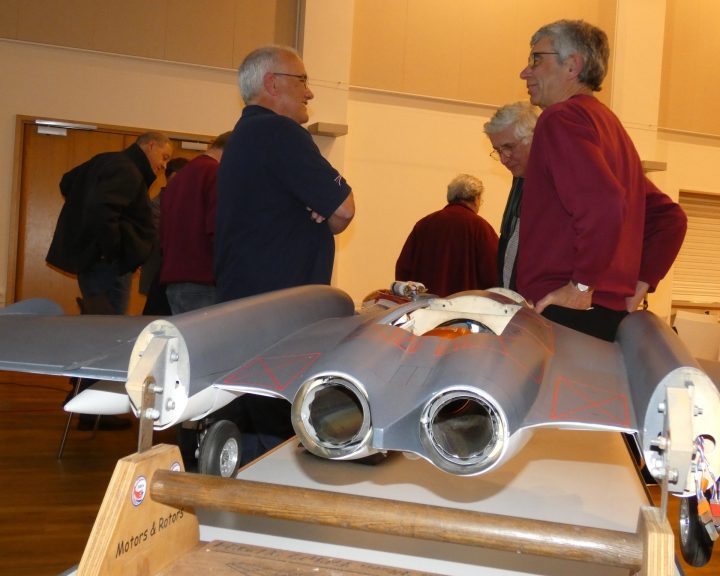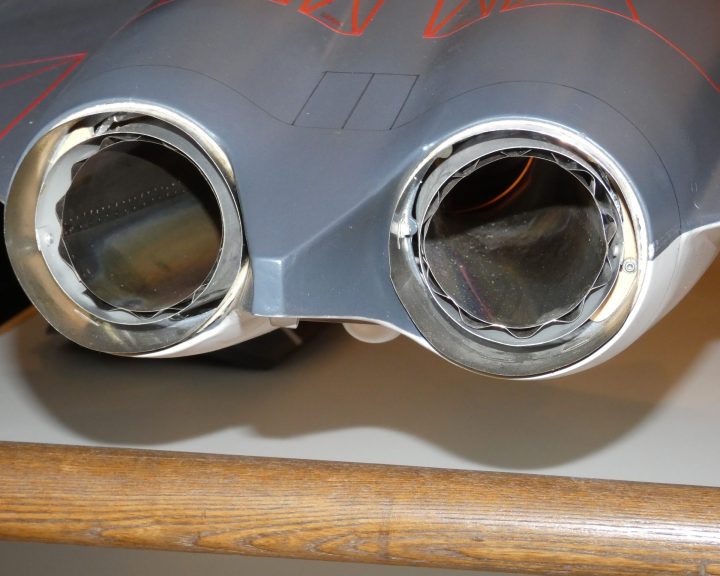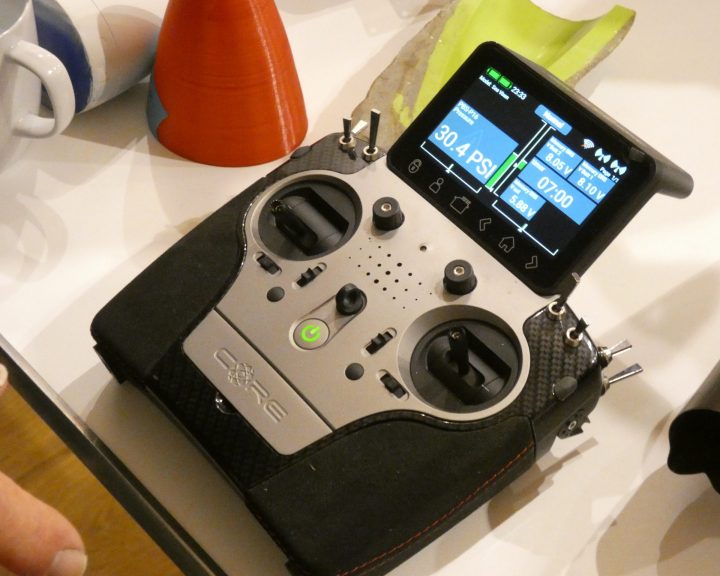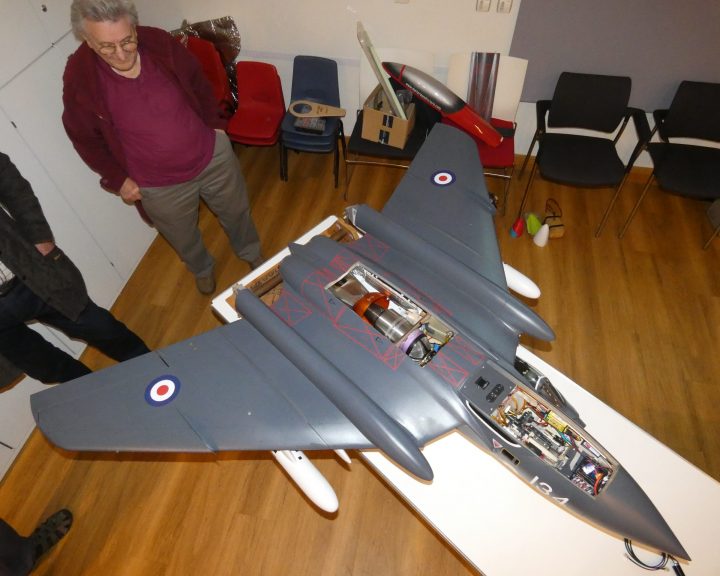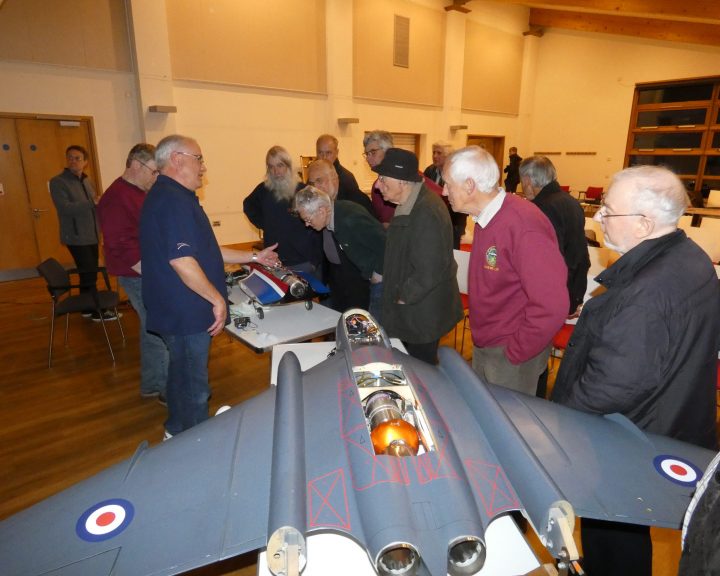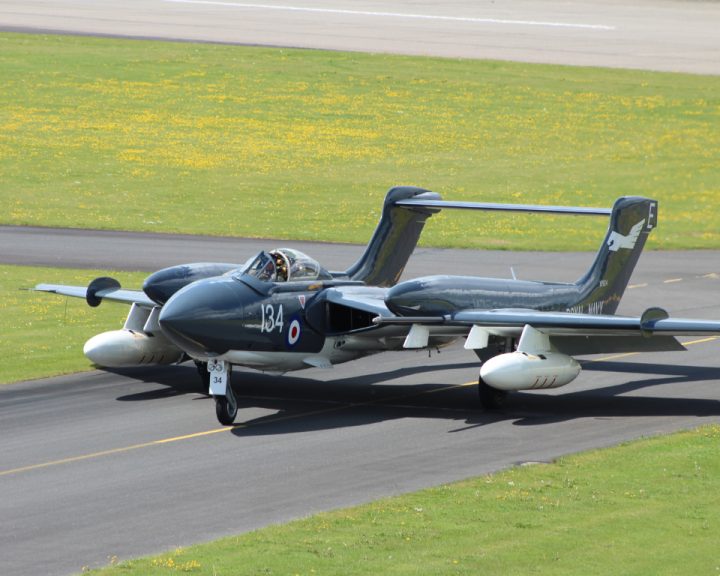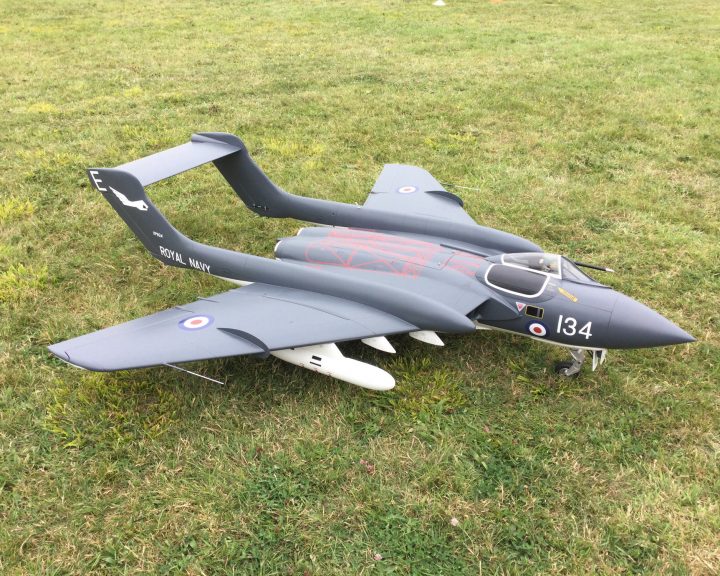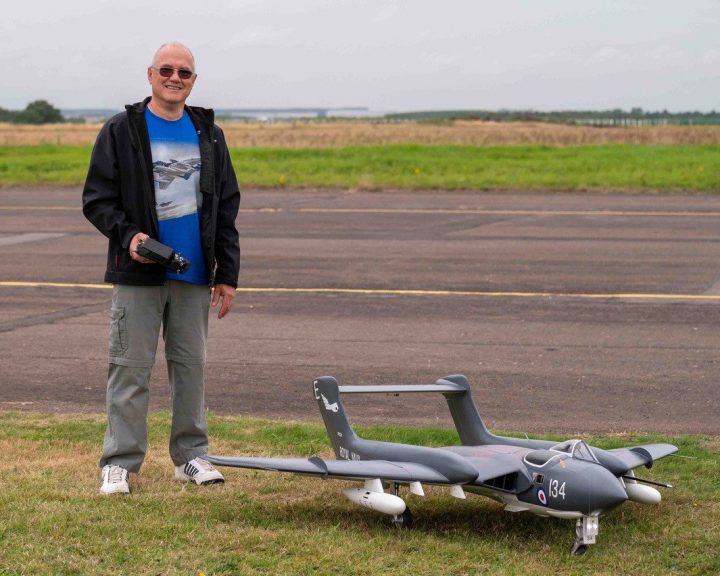The May Club evening.
Our Chairman started the meeting off with the items and events coming up this weekend and handed over to me for passing on the sad news that our oldest member Guy Ellerby had died, just short of his 104th birthday. The funeral was mentioned and all members invited to attend.
Then our Chairman introduced our speaker for the evening.
For me it was nice meeting our speaker for the evening again. Dave Batchelor was a past member of the club and was very welcome to come back and give us a talk. Dave's interests had gone from traction engines through yachts onto helicopters and now scale jet powered aircraft. Dave had brought along a sleek sports model and his current pride and joy a De Haviland Sea Vixen.
First he went through the various types of full size jet engines with a simple explanation of how they worked. Then Dave started on the model jet engines from their beginning in 1975 and the commercial development of RTR jet turbines. Prices start at the £2000 area and they require an on-board computer control and very sophisticated support equipment in the aircraft.
Dave took us through the way they work with the centrifugal compressor and the one-piece circular combustion chamber. This is connected to the turbine at the rear which feeds the power back to the compression stage. Temperatures at the rear end reach 650 degrees C so care has to be taken. We were shown the support equipment and the specialised servos and the use of pneumatic control of under carriage and flaps.
Dave brought along some damaged engines that will never fly again. One of them flew into a tree and that wrote off an engine costing several thousand pounds. We went over the component parts of the engine and the starting system. Then with the rain having almost stopped we had a firing up outside of the sports aircraft. Dave was most safety conscious as he took out his fire extinguisher to be close by. The transmitter starts the sequence off and then hands over to the aircraft computer which monitors temperature, rpm and fuel flow.
Suddenly the aircraft was alive and Dave was stopping her moving with his foot while he let the engine roar into life. It was delivering 100 Newtons which equates to about 23 pounds of thrust. Which is also equivalent to nearly 23BHP. Strangely it was all over very quickly and here is a short video to see the whole process.
We had a break for tea etc and a chat. Then all were called back in to hear about the building of his Sea Vixen. It was modelled on the last flying one and Dave got interested in this aircraft and its flying. Unfortunately it had a hydraulics failure and the under carriage failed to deploy and although it was flown around trying to resolve the issue it had to make what turned out to be its' last landing with the wheels up. The investigation that followed found the pressure in the system was insufficient to allow the wheels to drop due to the speed of travel. So she now lies in the Yeovilton naval station just too expensive to repair.
Dave visited and got many useful photos to enable him to build a replica model of No. 134 AWF 2. Dave bought a kit of laser cut parts to make the airframe and wings from and several times he modified the kit to suit his requirements for the No. 2 variant.
This model has a more powerful engine maybe around 35 Pounds of thrust which if I remember correctly was the same amount of power the Austin A35 had!
The complexity of this aircraft has to be seen to be believed, in appearance it is stunning with all the detail and working parts. Inside it is a mass of systems that enable her to start the engine and monitor it during flight together with a solid-state electronic gyroscope. This operates in 3 dimensions to compensate for changes of wind direction and speed and generally keeps the aircraft in steady flight. There are air tanks to supply air for the pneumatics to operate flight surfaces and the under carriage. There are also the fuel tanks of which there are 4 and the fuel system designed to remove air bubbles from the fuel and cope with aerobatics.
The transmitter has telemetry so that live on-board information on the internal operating systems is transmitted for the operator to see, there are safety systems in place as well. We had been enjoying Dave’s very relaxed presentation and willingness to stop and talk and answer questions. The information just kept on coming and we were all enjoying it immensely.
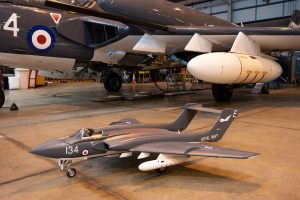
Dave had been in contact with the Memorial hangar group and shown his model next to the prototype but no longer flying De Havilland Sea Vixen.
All were impressed.
The bad news was that we were running late but general consensus was to continue which we did until 10:30. However Dave offered to return and finish this part of his talk and then tell us about his large model of the Avro Vulcan. I can't wait, but we will discuss this in the next few days or so and fit it in later on.
It is difficult to compare the talks we have as we are most grateful that our members are willing to share their interests with us. The ability to design and bring all this technology together into a functioning high speed model aircraft moves it into one of our special evenings.
A video of Dave's Sea Vixen in flight can be seen HERE on YouTube.
Thanks again Dave for a super evening. There were many pictures taken which should fit in with the narrative.
Thanks as always go to the members who set out the chairs and organised their removal and of course to Jack and Neil for providing the refreshments. Others stepped in to allow hall fees to be collected by card. All coming together for a most enjoyable evening.
Regards, Roy.
11/05/2023

